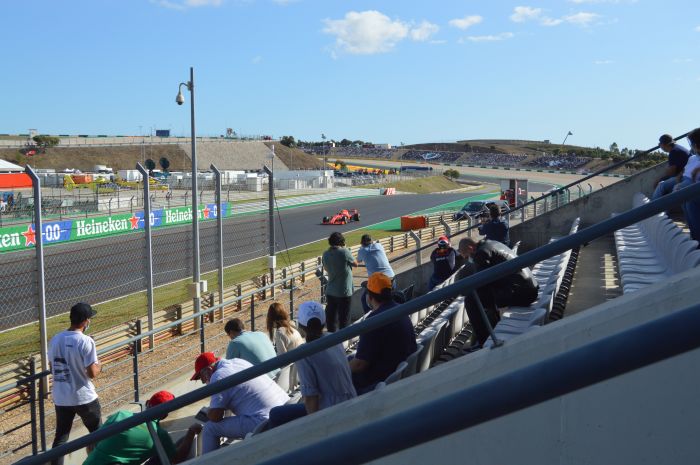






Overview
In 2020, due to the COVID-19 pandemic, the Formula 1 World Championship calendar was subject to sweeping changes; several races were canceled, and several new venues were included.
One new racing venue was the Autódromo Internacional do Algarve, which hosted the first Portuguese Formula 1 Grand Prix since 1996.
This created the perfect opportunity to enhance the track infrastructure with a new weather station, including the ability to monitor road surface temperatures (RST).
The Campbell Scientific solution was a quick-to-deploy setup that provided accurate, real-time data to the track owner over a wide range of parameters. The clear data visualisation in KonectGDS ensured an easy method to disseminate the information. This solution was installed within a tight time frame and did not require extensive infrastructure changes to the track, demonstrating the versatility and effectiveness of Campbell Scientific solutions.
The Challenge
Weather strongly influences motorsports, impacting safety, performance, and racing strategies. This makes a weather and road-condition observation system a critical tool for racing teams, race control managers, and track owners, providing them with real-time data during racing events for better nowcasting and more accurate local weather pattern forecasting. Greater knowledge of long-term, local weather patterns is invaluable for track owners so they can provide their clients with important information for scheduling races and private testing events.
A solution was required to monitor a comprehensive range of parameters, including RST. The solution also needed to meet these criteria:
- Have a compact package for minimal visual and spatial impact.
- Be capable of non-invasive RST monitoring.
- Include a web-based platform for public access to the information.
The Solution
The chosen solution enhanced the racetrack circuit infrastructure with a new weather monitoring system. To measure ambient weather conditions, the Campbell Scientific ClimaVUE™50 multiparameter weather sensor was deployed—an easy-to-install, compact sensor with extremely low power consumption. The ClimaVUE 50 measures air temperature, relative humidity, vapour pressure, barometric pressure, wind (speed, gust, and direction), solar radiation, precipitation, and lightning strikes (count and distance).
To measure the RST, a precursor to the Wintersense SDI-12 sensor—a highly accurate, infrared, non-invasive (no-contact) sensor—was installed several meters from the track.
Both the ClimaVUE 50 and the surface temperature sensor were connected to a small electronics housing with the CR300 datalogger and built-in cellular GPRS modem. The system was powered by mains power, and the three components (electronics housing and two sensors) were easily installed on an existing pole close to the pit entrance.
The Benefits
The weather and RST data can be used by the track owner/operator for the following:
- Providing weather condition information to spectators to improve the spectator experience
- Adding value to the overall track facilities by providing weather and track condition information to the race teams
- Disseminating live weather information and historical weather data to potential track users for purposes such as Formula and MotoGP racing, automotive test trials, and demonstrations of track conditions
- Creating short-term weather and track condition forecasts for track users
- Gaining further insights regarding the track surface conditions and identifying problematic areas on the track (including areas with variances), such as cold/warm spots, shading, degree of exposure to wind and rain, etc.
- Detecting lightning to enhance safety for those in the area
- Measuring, identifying, and automatically alerting for extreme/disruptive weather events (high-speed wind gusts, high-intensity rainfall, high ambient and track temperature, etc.) to enhance user safety
The system’s overall design allows easy and fast deployment in virtually any part of the track, and it is easily mobile.